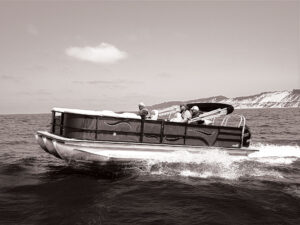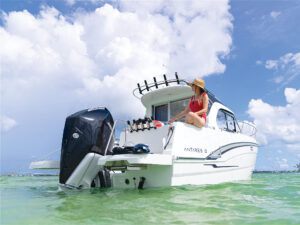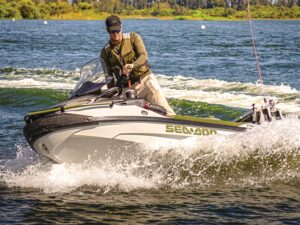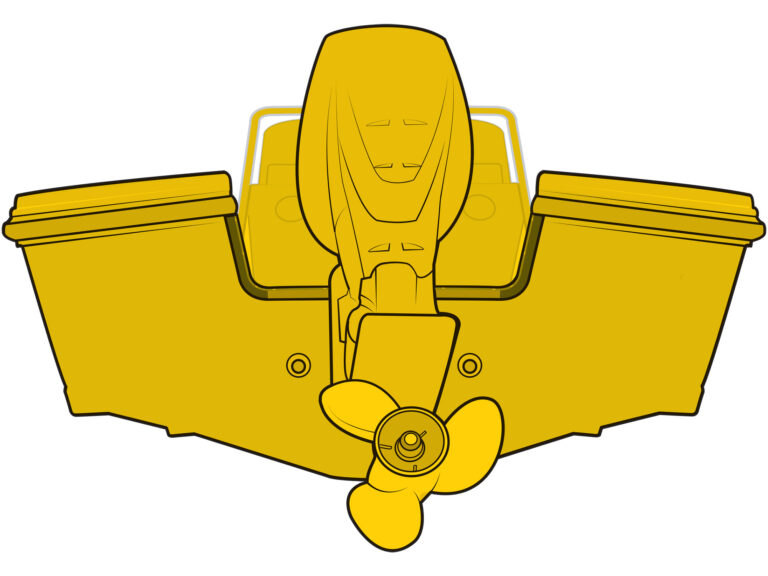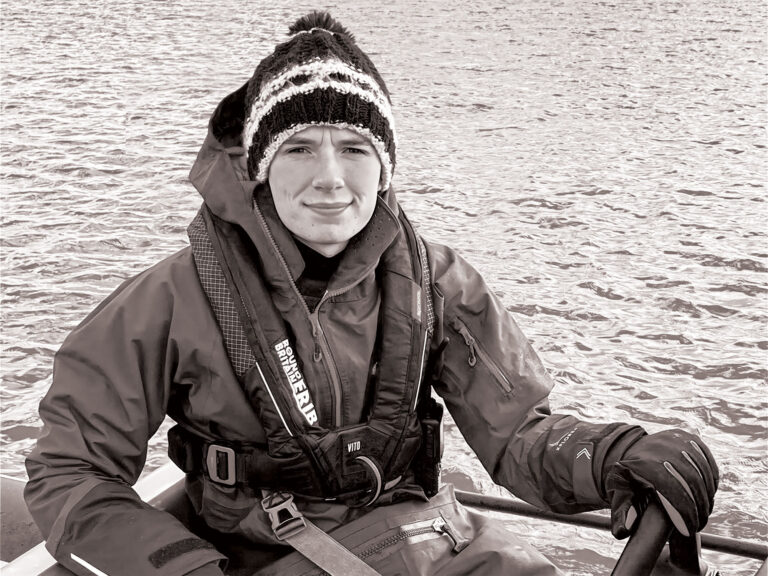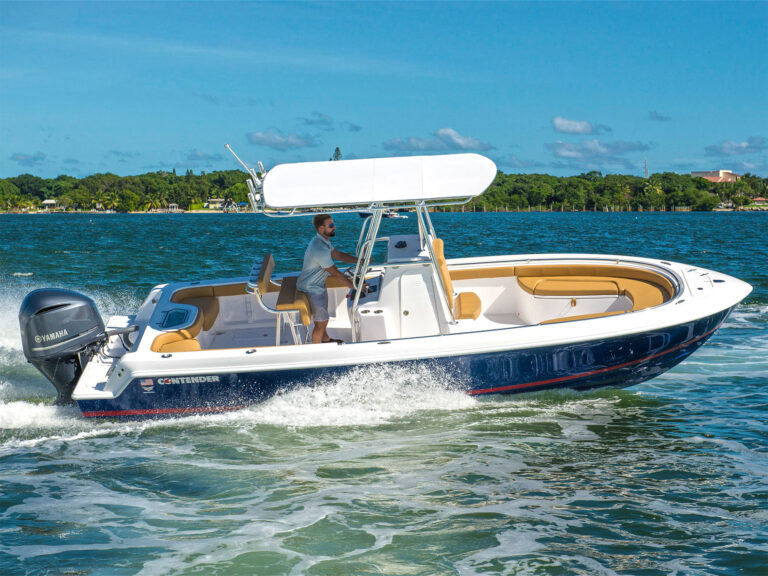Updated August 30, 2016 Bayliner Buys Heyday Inboards
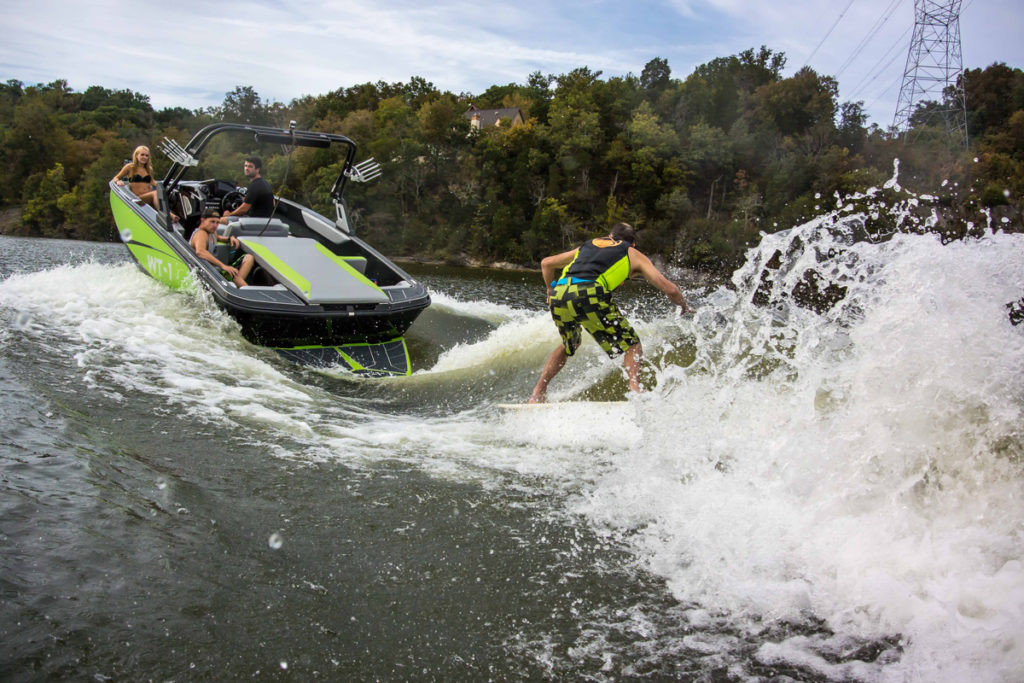
This new boat was developed under the code name Wake Tractor, an especially apt label for a craft designed to plow a hole in the water. Now set to launch as the Heyday Inboards WT-1, it’s an inboard tow boat designed by a millennial wake-sports fanatic for his peers, featuring a millennial-friendly target price of just $40,000. The WT-1 also represents an effort by Heyday Inboards to make boat ownership accessible to that generation by following a new approach to the purchase process with an emphasis on personalization and community.
Heyday Inboards and the WT-1 are the father-and-son brainstorm of John Dorton, the 54-year-old president of Bryant Boats, and Ben Dorton, a 26-year-old former competitive wakeboarder. After 13 years at the helm of MasterCraft, John acquired a controlling interest in Bryant in 2012. Ben, a recent University of Tennessee grad (biology major) became a partner and Bryant brand manager. The pair stayed busy, revitalizing Bryant and biding their time until John’s two-year noncompete contract for inboards expired. Waiting, it turns out, to start a new brand called Heyday Inboards.
The Idea
Ben started wakeboarding at age 6, hanging with pro athletes sponsored by MasterCraft, and competed with the UT wakeboarding squad. Done with school, in the work world and married, Ben entered a stage of life that did not include unlimited access to a tow boat that somebody else paid for. And like his boarding buddies, Ben knew that a premium inboard tow boat was way beyond his budget.
“This started with casual conversations with my friends,” says Ben, who is president of Heyday. “Most of us never really owned the tow boat. It was purchased by our family or the university or provided by a sponsor. But there’s a strong desire among us to stay on the water.”
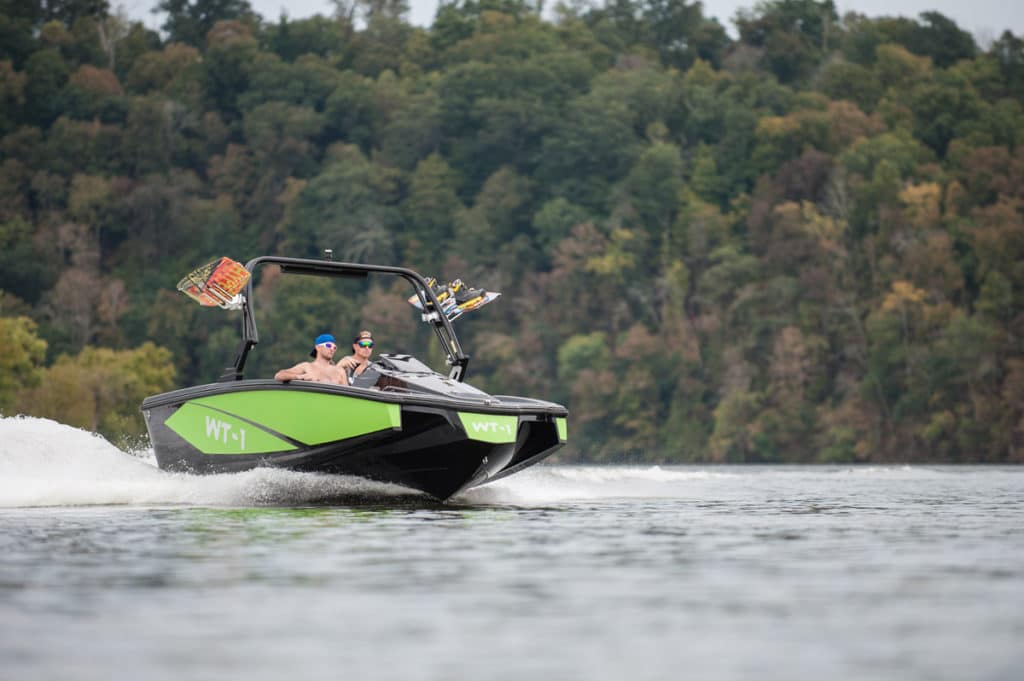
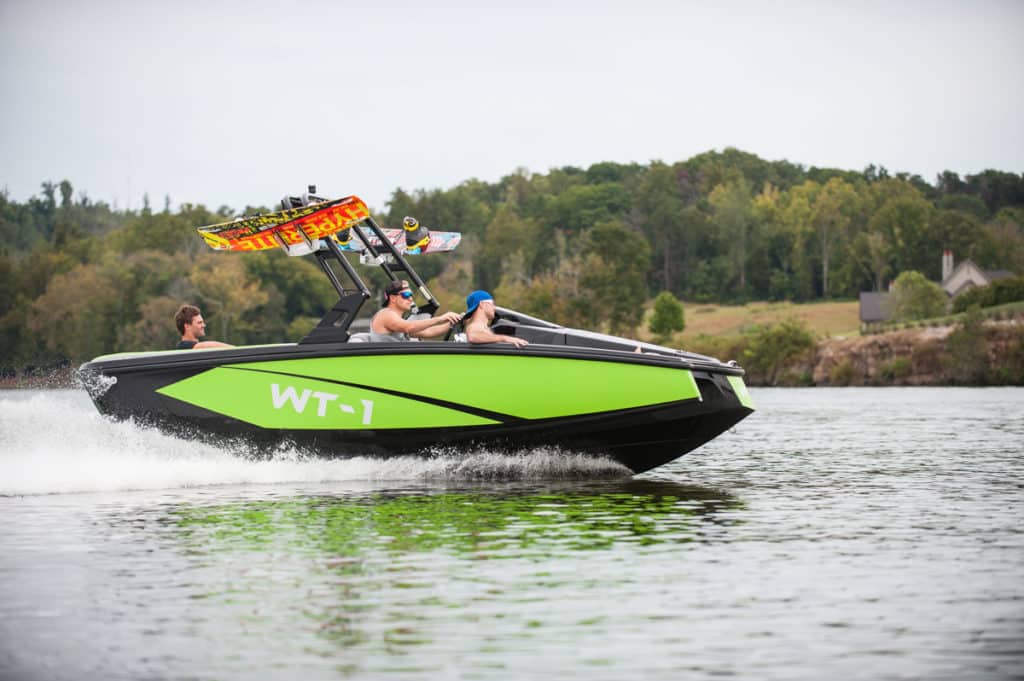
The premise behind Heyday’s WT-1 was to design a boat that fits the budget, parking space and tow vehicle of a young-adult wake-sports enthusiast. According to John, that customer has been priced out of the inboard tow-boat market.
“The alternative is maybe a jet boat or a used tow boat, like an old Pro Star 190, which he might fit with a tower and ballast, or no boat at all,” says John, who has the CEO title at Heyday. “Or he or she could spend their money on an off-road side-by-side and get an action fix that way.”
Heyday will provide its own financing option, and John expects a typical monthly tab for a new WT-1 to be $299, depending on credit rating and down payment. To make the purchase process less intimidating, Ben hopes to make it possible to finance and order a new WT-1 online by 2017. The boat will be delivered through a Heyday dealer.
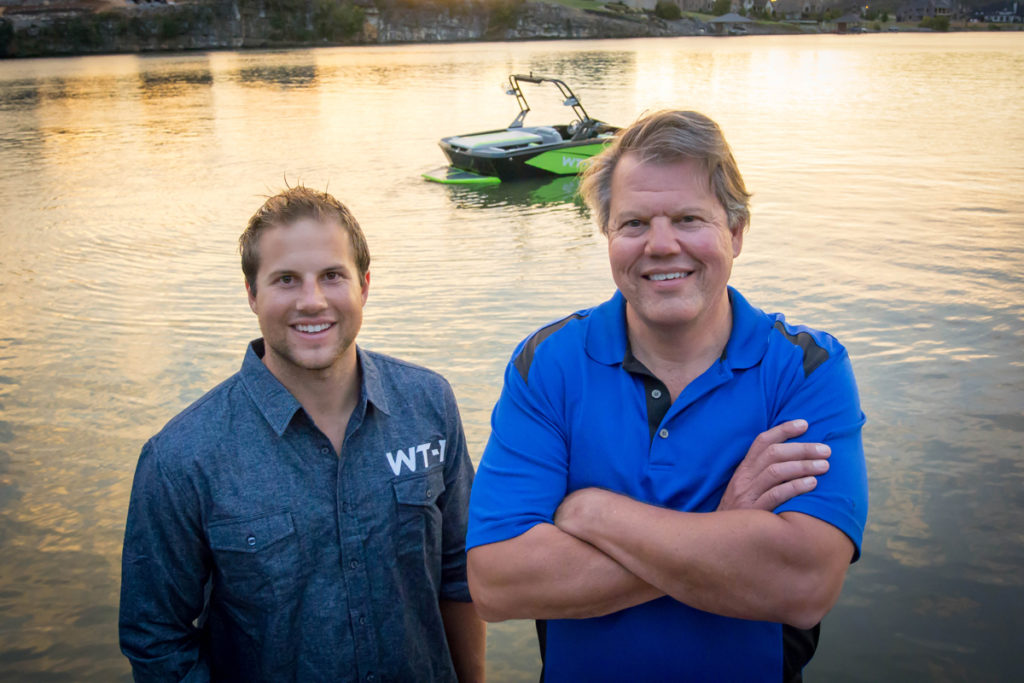
“Young consumers have a hard time crossing the threshold of a traditional marine dealership and communicating with someone they consider an old-man dealer,” Ben says. “They are used to doing business online, and they also value personalization. So instead of options, we’ll offer accessories they can order and install. Hull graphics are applied with a vinyl wrap that can be replaced to change the look of the boat. The idea is to let the boat evolve with the owner’s vision and keep up with a very dynamic lifestyle. We’ll also open an online community where Heyday owners can meet and share experiences, images and ideas.”
Ben’s vision for the Heyday Inboard brand is expansive.
“Our tagline is ‘Wake Tunes Crew,’” Ben says. “That’s what the Heyday lifestyle is about: time on the water, music and sharing the experience. I want the Heyday website to become a mash-up of Pandora and YouTube where people can share photos and video and music in a format that’s much bigger than the typical owner’s forum site. The Heyday brand is more than just the boat.”
The WT-1 is designed to get people enjoying their personal heydays out on the water while in their physical primes and likely unencumbered with full packages of commitments and responsibilities. The Heyday brand supports the experience. It’s a business plan that’s worked for companies like Harley-Davidson and Burton Snowboards but has never been fully executed in the marine market.
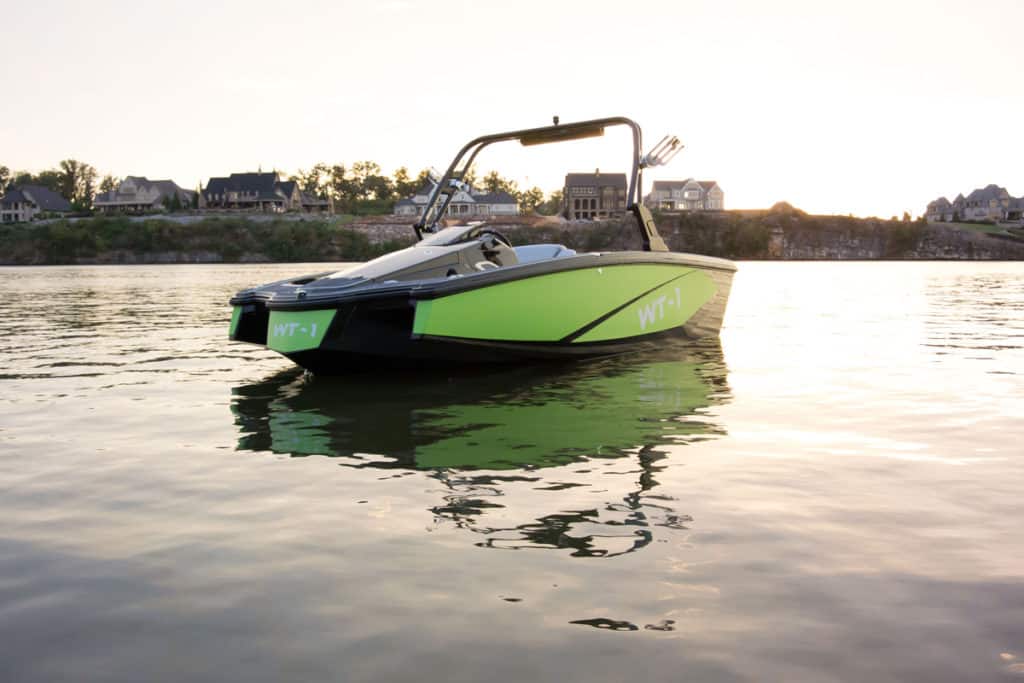
The Boat
The WT-1 is just as bold as the business plan.
“I wanted this boat to produce a great wake for both surfing and boarding right out of the box, fine-tuned with ballast and boat speed so it would not need tabs,” Ben says. “To meet our price and size parameters, we needed to design an 18-foot boat that would make the wake of a 21-footer.”
The running surface came first, developed by Cotton Welshen, a former MasterCraft designer with 30 years experience who has moved to Bryant. Working from an existing boat hull, Welshen and Ben reshaped the running surface over and over until they dialed in a wake shape they liked with validation from UT team riders and some pros.
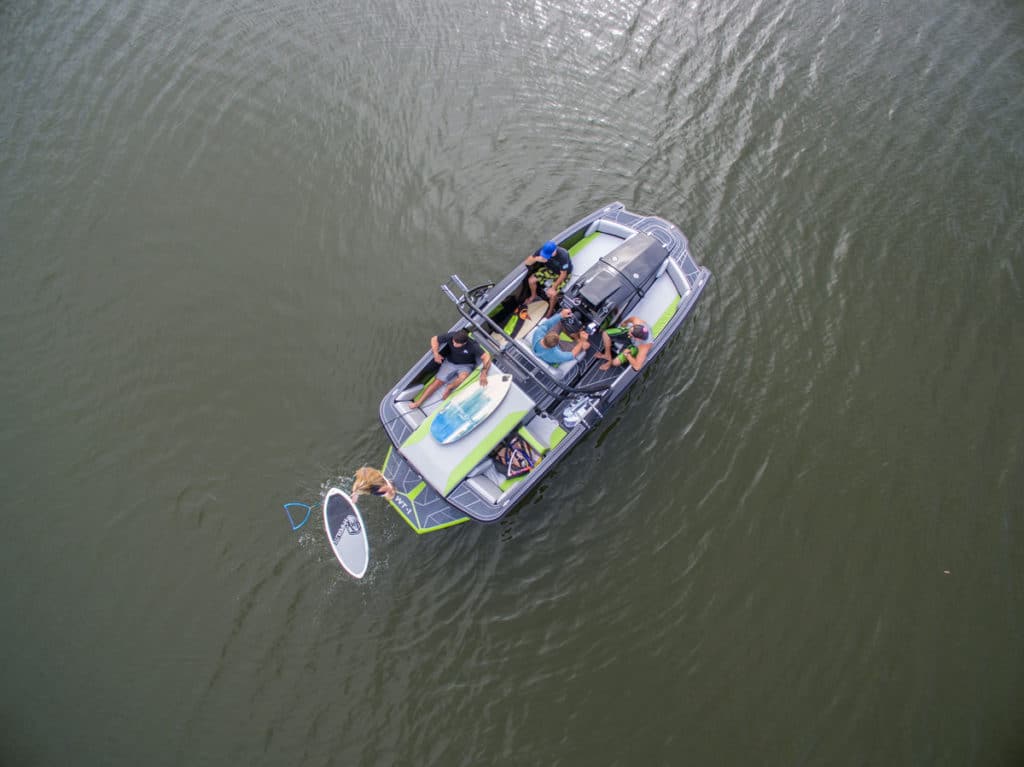
With a hull shape in place, Ben turned to Peter Granata, the designer who introduced the “pickle fork” deck layout for MasterCraft and Cobalt that has since been adopted by a multitude of builders, for a cockpit concept. Working with design input provided by 19- to 24-year-old Lawrence Technological University students, Granata returned an idea boldly styled but rooted in pure function and so dramatically different, it’s almost confusing to look at. The WT-1 is to a current tow-sports boat what a stealth fighter is to an F-16 — you assume that it floats or flies almost on faith.
The bow of the WT-1 seems simply clipped off, eliminating length that doesn’t provide much function in a boat expected to see lake duty. Deep chines carry forward like sponsons to provide required buoyancy. Slab-flat hull sides rise from the bow to transom, creating a lot of freeboard aft, even when ballast pushes the boat low in the water, and the bow pitches high at surfing speed. The transom is very high, angled at 117 degrees, with corner radiuses. Ben says this is key to influencing how water breaks off the hull to shape the wake and also helps prevent wash from coming over the transom — there’s no need to feather the WT-1 down off plane, even when it’s loaded with ballast.
The one-piece fiberglass cockpit liner has a raised center spine that runs from transom to bow, covering the engine and incorporating a central helm that’s positioned as far forward as possible. The helm position and clipped bow give the boat the look of a Formula One race car on the water, but, once again, function is at the forefront of the design.
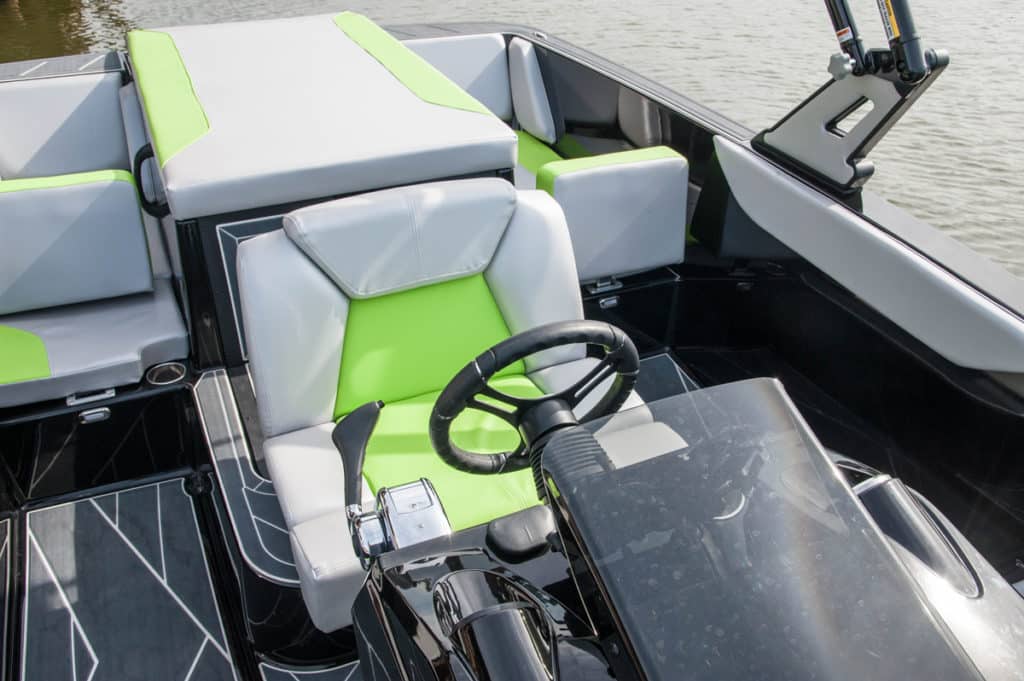
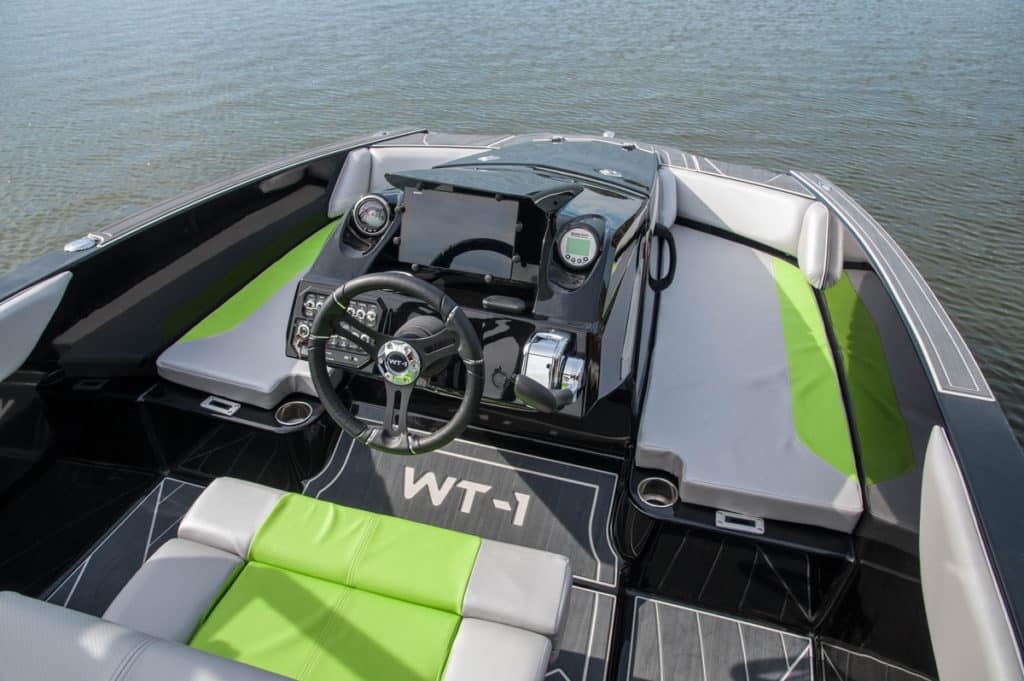
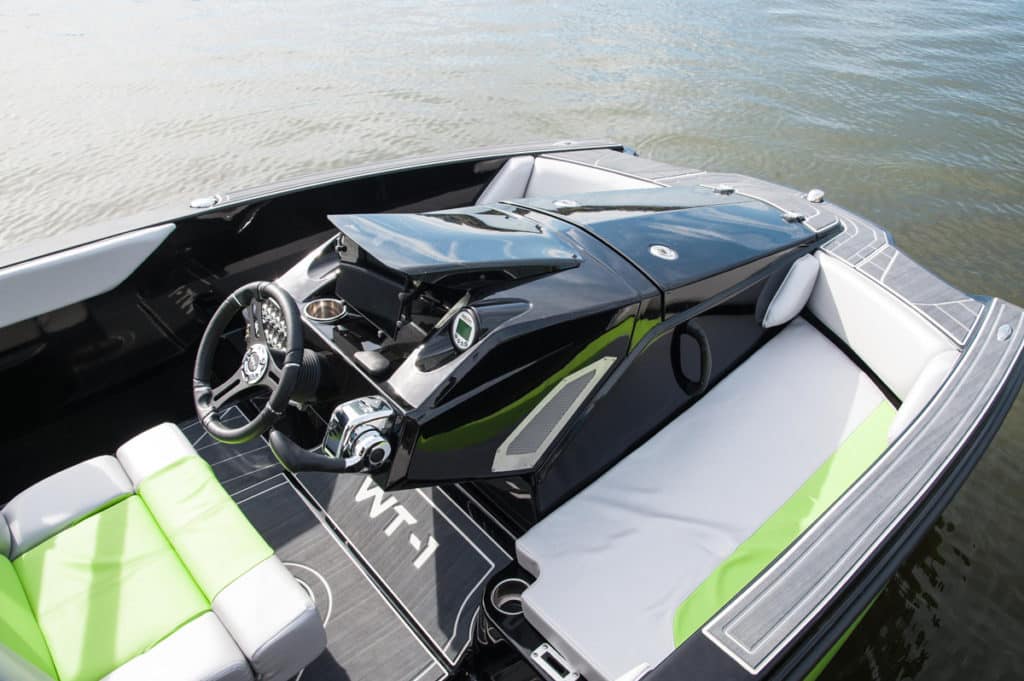
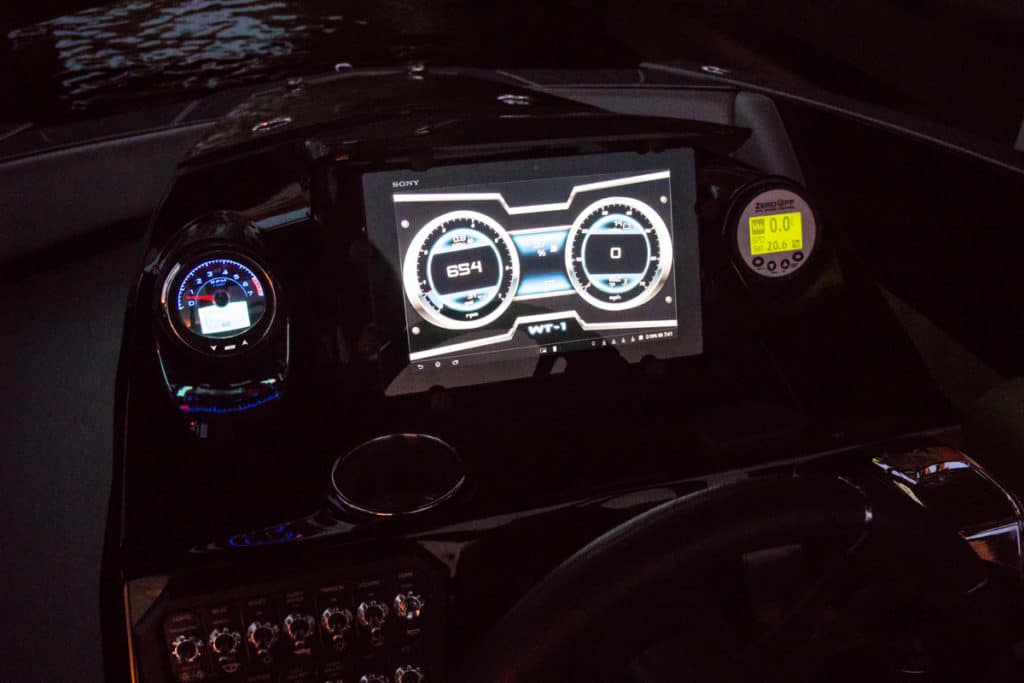
“The helm position gives the driver a more commanding view forward when the bow is high at surf speeds,” Ben explains, “and places the driver’s weight forward and on center to better balance the boat. When the driver is to starboard, that weight always needs to be accommodated first to get the wake shape just right. This design also let us put seating areas to both sides of the helm so the driver feels less isolated.”
The fuel tank is located below the helm, reinforcing the “weight forward” idea. Stowage is located below a hatch forward of the helm. A bucket helm seat is standard. Other seating areas that flank the tall motorbox and the helm console are little more than vinyl-covered pads resting on a flat fiberglass surface. Removable backrests slip in and out of pockets in the deck so passengers may face fore or aft. There’s no stowage below the seats because that space is utilized for 1,200 pounds of ballast, which is pumped into port and starboard compartments surrounded by the fiberglass stringers and the deck. A similar pad tops the motorbox, which seems very high off the sole because the cockpit is so deep — 29 inches amidships.
Rated for eight passengers, the WT-1 can really carry five or six people comfortably. Ben points out that a smaller group is usually more fun — there’s less crew waiting for a turn behind the boat.
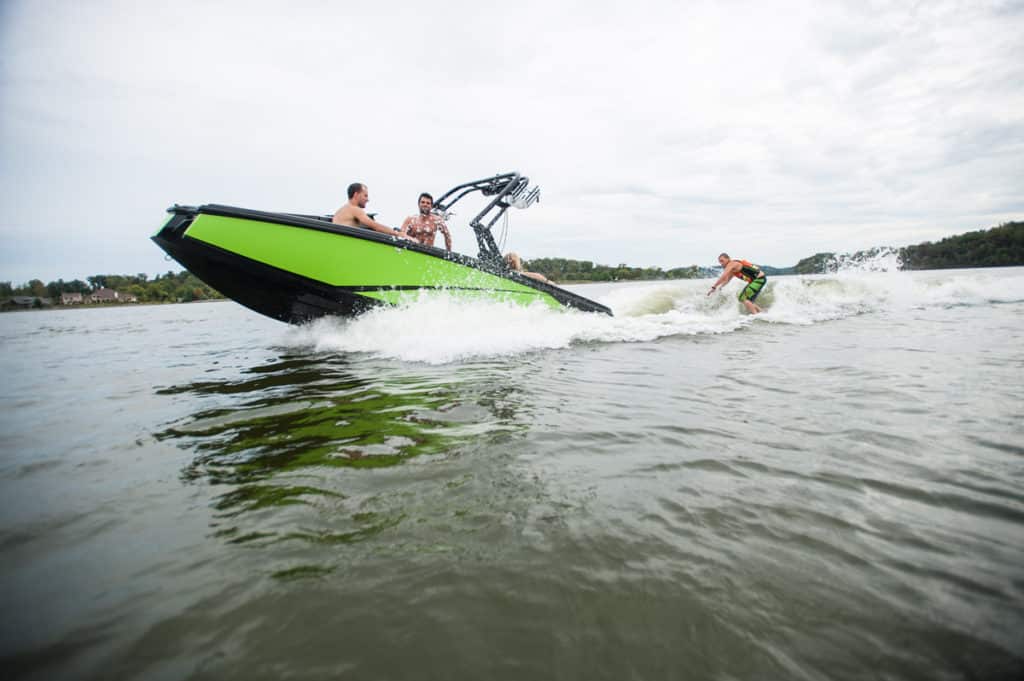
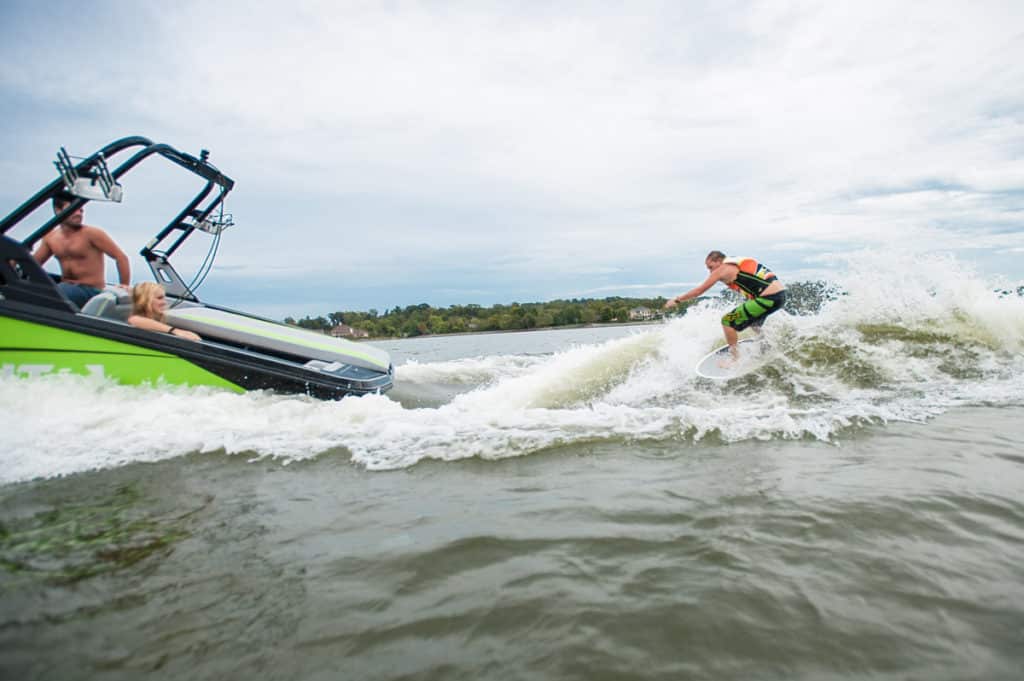
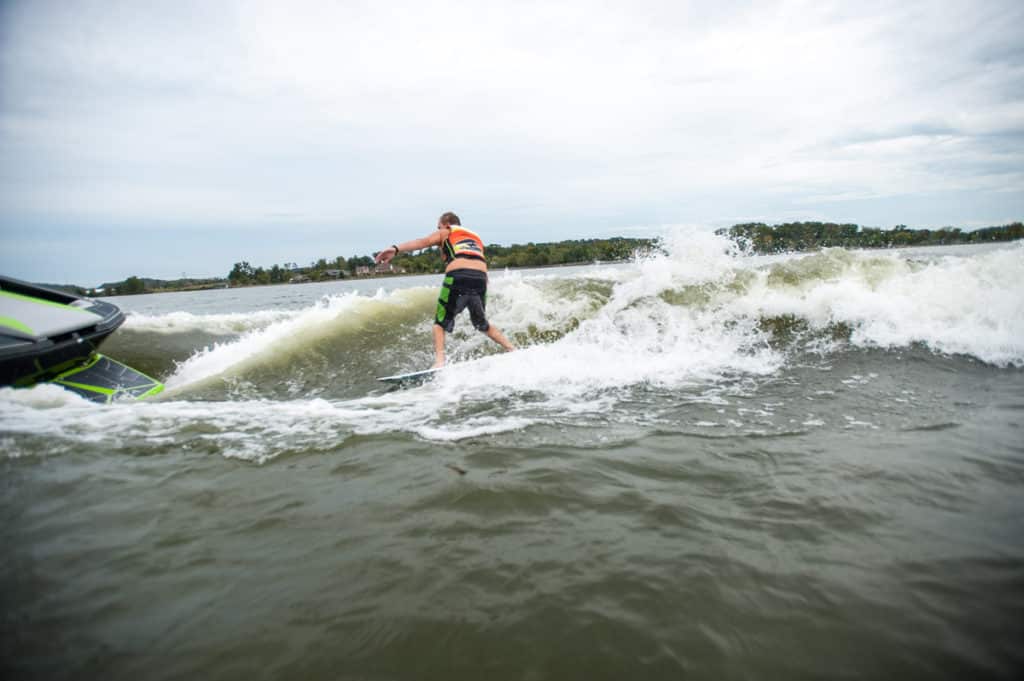
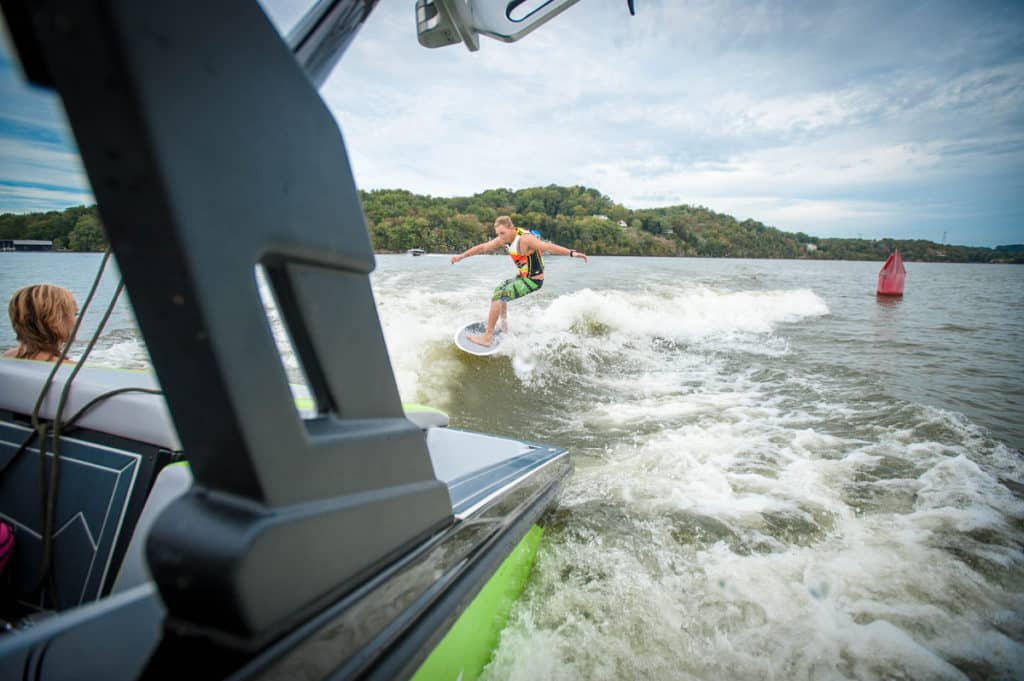
It was a bright fall day on the Tennessee River when I got my first chance to slide behind the wheel of the WT-1. Facing me was the screen of a tablet computer Ben had secured in a Ram Mount on top of the console. The WT-1 is equipped with a single traditional instrument — an analog tachometer with a small screen that scrolls through fuel use, boat speed and oil pressure — tucked down low on the left side of the dash. That info is also transmitted via Bluetooth to an owner-supplied tablet or smartphone. The same Bluetooth digital device can also supply music to a 32-inch Wet Sounds sound bar mounted on the tower — there’s no full audio system. The tablet can also serve other functions, for example, displaying the view of a GoPro camera on the boat. The WT-1 does have a steering wheel and a throttle lever, so I was not completely disoriented.
The WT-1 sample I drove was hull No. 1, really a prototype put together in time for a trade show. In fact, a week after my ride, that WT-1 was dismantled so its hull could be fine-tuned and redigitized to create the final production tooling. That being said, the entire premise of the boat seemed to be on the mark. Its 350 hp Crusader Challenger V-8 engine popped us right on plane, geared and propped just right to enable accurate incremental speed adjustments at wake velocity. The wake looked sporty to me — certainly bigger and more defined than the wake behind any sterndrive runabout. A big inboard tow boat is obviously going to make a taller wake, but the WT-1 hull plowed more water than you’d expect from an 18-foot hull — which is exactly the point.
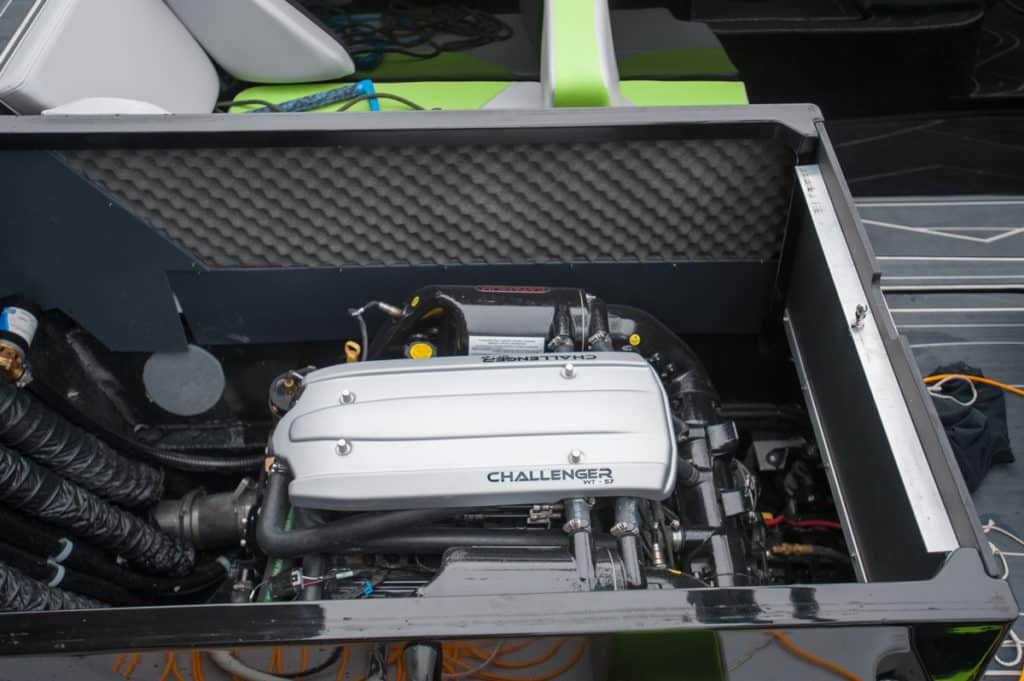
The interior of the WT-1 echoes the voice of the customer; according to Ben, the Lawrence Tech project put a low priority on accommodations, especially if they drove up the cost of the boat. The wake comes first, followed by adequate power and an affordable price. That passengers are relegated to padded slots between the high inwales and motorbox apparently does not matter. The design allows the entire deck to be formed as a single piece in a very simple mold, with the helm console and the hatch over the stowage compartment being the only two “small parts.” The WT-1 and its trailer weigh less than 4,000 pounds, falling within the towing capacity of midsize vehicles.
The WT-1 is a perfect expression of the Heyday Inboard mission: It delivers an affordable and capable tool for the wake-sports experience — a boat in tune with the lifestyle of its intended customer. The WT-1 is absolutely not Daddy’s tow boat, and it may be all the boat the next generation needs.
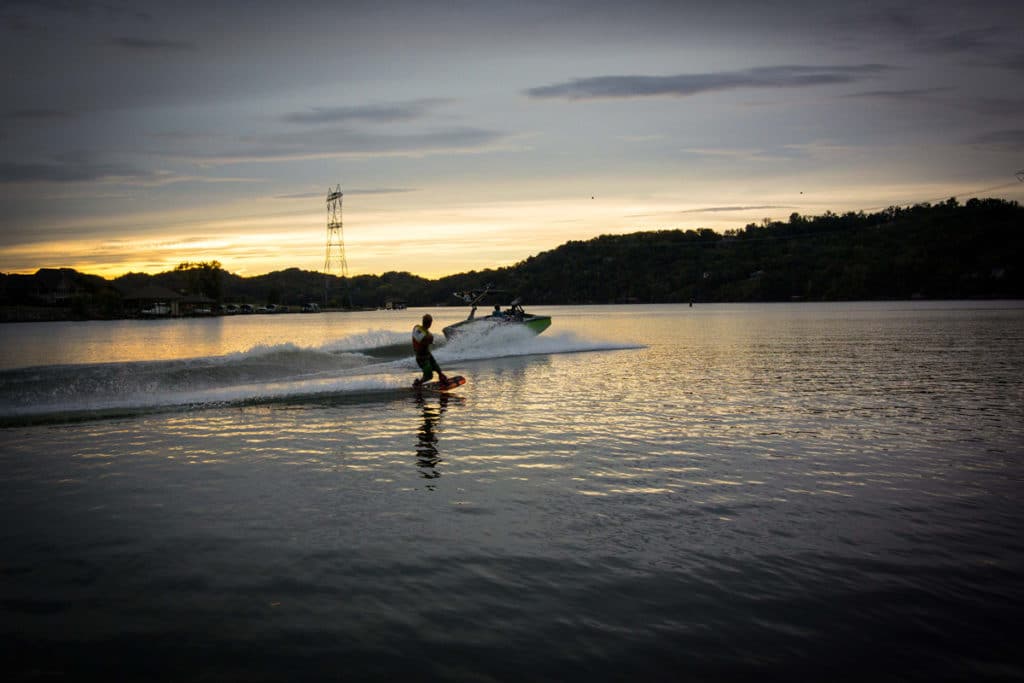
Under Budget
The WT-1 is designed to meet a target price point. Here’s where the designers found some of that savings.
$2,800: Wet Sounds sound bar versus a stereo head unit with speakers, wiring and installation labor. The sound bar has a single power cable.
$2,100: Ballast in bilge versus roto-molded ballast tanks.
$945: Single solid hull and deck color with vinyl-wrap graphics versus multicolor gelcoat with graphics, saving 25 man-hours of labor.
$1,470: Basic tow tower versus a “bling” tower with billet-aluminum accents.
$1,015: No windshield versus a glass windshield and its frame.
$1,540: Basic WT-1 trailer with a black frame and black painted wheels versus a color-matched trailer with alloy wheels.

